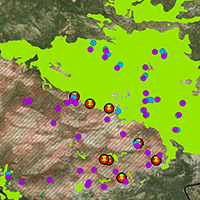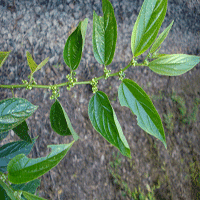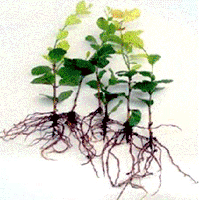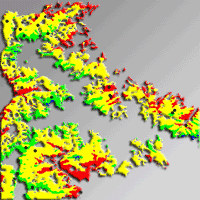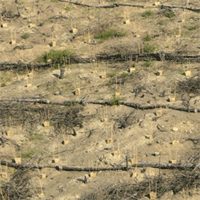
First results on early post-fire succession in an Abies cephalonica forest (Parnitha National Park, Greece)
P Ganatsas (1) , E Daskalakou (2), D Paitaridou (3)
iForest - Biogeosciences and Forestry, Volume 5, Issue 1, Pages 6-12 (2012)
doi: https://doi.org/10.3832/ifor0600-008
Published: Feb 06, 2012 - Copyright © 2012 SISEF
Research Articles
Abstract
Due to climate changes, the interest in the post-fire recovery of forest communities not adapted to wildfires, such as Greek fir (Abies cephalonica) forests, has increased. In this study, the post-fire recovery of the burned A. cephalonica forest of Parnitha National Park (central Greece) was investigated after a stand-replacing fire occurred in summer 2007, as well as the performance of A. cephalonica plantings in the post-fire conditions. The research focused on the estimation of the A. cephalonica stand reproductive capacity without fire, the evaluation of the post-fire regeneration of the burned stands, and the monitoring of the plantations performance after the fire in the area. Then, based on the field and laboratory data, the post-fire recovery process of A. cephalonica was evaluated by application of a simplified form of the comprehensive causal framework for ecological succession estimation in open site, developed by Pickett et al. (1987), adapted to the study conditions. According to the findings of the study, stand seed crop without fire was high, while seed quality was found extremely low. In the burned area, no A. cephalonica seedling recruitment was observed during the three years after the fire. A. cephalonica plantings exhibited a medium overall survival rate (65.3%), while seedlings growth was very slow. Thus, we can suppose that an ecological succession process may occur in the burned area, if no human interventions applied, and species adapted to wildfires (mainly shrubs and herbaceous) will dominate in the area. However, planting of A. cephalonica seedlings could contribute to the species participation in the post-fire communities.
Keywords
Greek fir, Ecological succession, Spontaneous regeneration, Planting performance
Authors’ Info
Authors’ address
Aristotle University of Thessaloniki, Laboratory of Silviculture, PO Box 262, GR 54124, Thessaloniki (Greece)
Institute of Mediterranean Forest Ecosystems & Forest Products Technology, NAGREF, Athens (Greece)
Development & Forest Protection & Natural Environment, Section of Forest Nurseries & Seed Production MRDF, Athens (Greece)
Corresponding author
Paper Info
Citation
Ganatsas P, Daskalakou E, Paitaridou D (2012). First results on early post-fire succession in an Abies cephalonica forest (Parnitha National Park, Greece). iForest 5: 6-12. - doi: 10.3832/ifor0600-008
Academic Editor
Marco Borghetti
Paper history
Received: Sep 14, 2011
Accepted: Nov 09, 2011
First online: Feb 06, 2012
Publication Date: Feb 27, 2012
Publication Time: 2.97 months
Copyright Information
© SISEF - The Italian Society of Silviculture and Forest Ecology 2012
Open Access
This article is distributed under the terms of the Creative Commons Attribution-Non Commercial 4.0 International (https://creativecommons.org/licenses/by-nc/4.0/), which permits unrestricted use, distribution, and reproduction in any medium, provided you give appropriate credit to the original author(s) and the source, provide a link to the Creative Commons license, and indicate if changes were made.
Web Metrics
Breakdown by View Type
Article Usage
Total Article Views: 63293
(from publication date up to now)
Breakdown by View Type
HTML Page Views: 51729
Abstract Page Views: 4634
PDF Downloads: 5463
Citation/Reference Downloads: 43
XML Downloads: 1424
Web Metrics
Days since publication: 5080
Overall contacts: 63293
Avg. contacts per week: 87.21
Citation Metrics
Article Citations
Article citations are based on data periodically collected from the Clarivate Web of Science web site
(last update: Mar 2025)
Total number of cites (since 2012): 28
Average cites per year: 2.00
Publication Metrics
by Dimensions ©
Articles citing this article
List of the papers citing this article based on CrossRef Cited-by.
References
Fire and pine ecosystems. In: “Ecology and biogeography of Pinus” (Richardson DM ed). Cambridge University Press, Cambridge, UK, pp. 193-218.
Gscholar
Silvicultural problems in the fir forest of Mount Parnis. Geotechnical Scientific Issues 16: 4-17 (in Greek).
Gscholar
Effects of fire on high altitude coniferous forests of Greece. In: “VI International Conference on Forest Fire Research 2010” (Viegas DX ed). Coimbra (Portugal) 15-18 November 2010.
Gscholar
Pines of the mediterranean basin. In: “Ecology and biogeography of Pinus” (Richardson DM ed). Cambridge University Press, Cambridge, UK, pp. 153-170.
Gscholar
Genetic improvement effects on growth and yield of loblolly pine plantations. Forest Science 33: 707-724.
Gscholar
Eco-physiology of the post-fire regeneration of Aleppo pine (Pinus halepensis). Ph.D. Thesis, Department of Botany, Faculty of Biology, National Kapodistrian University of Athens, Greece, pp. 179.
Gscholar
Fire recurrence effects on the structure and composition of Mediterranean Pinus halepensis communities in Catalonia (northeaster Iberian Peninsula). Ecoscience 11: 446-454.
Gscholar
Study on the post-fire rehabilitation capacity of the burned endemic fir forest in Parnitha National Park, Greece. In: Proceedings of the “14 Conference of the Hellenic forestry society”. Patras (Greece), 1-4 November 2009, pp. 1-13 (in press).
Gscholar
Reforestation study of Mt Parnitha’s fir forest. Prefecture of Attica, Department of Reforestations of Attica, Athens, Greece.
Gscholar
International rules for seed testing. International Seed Testing Association (ISTA). Seed Science and Technology 21: 160-186.
Gscholar
Climate change 2001: synthesis report. A Contribution of Working Groups I, II, and III to the Third Assessment Report of the Intergovernmental Panel on Climate Change (Watson RT, Core Writing Team eds). Cambridge University Press, Cambridge, UK, pp. 398.
Gscholar
Ecosystems over time: succession and other types of change. In: “Forests: fresh perspectives from ecosystem analyses” (Waring R ed). Oregon State University Press, Corvallis, Oregon, USA, pp. 27-58.
Gscholar
Ecology, biogeography and management of Pinus halepensis and P. brutia. Forest ecosystems in the mediterranean basin. Backhuys Publishers, Leiden, The Netherlands, pp. 407.
Gscholar
Monograph of Abies cephalonica Loudon. Annales Forestales (Zagreb) 7/1: 1-25.
Gscholar
Regeneration patterns of three mediterranean pines and forest changes after a large wildfire in northeastern Spain. Ecoscience 9: 89-97.
Gscholar
Regeneration of Abies cephalonica in Mountain Parnitha national park. PhD Thesis, Aristotle University of Thessaloniki, pp. 440. (in Greek with an English summary).
Gscholar
Post-fire plant community dynamics in the Mediterranean basin. In: “The role of fire in Mediterranean type ecosystems” (Moreno JM, Oechel WC eds). Ecological Studies, Springer-Verlag, vol. 107, pp. 1-15.
Gscholar

